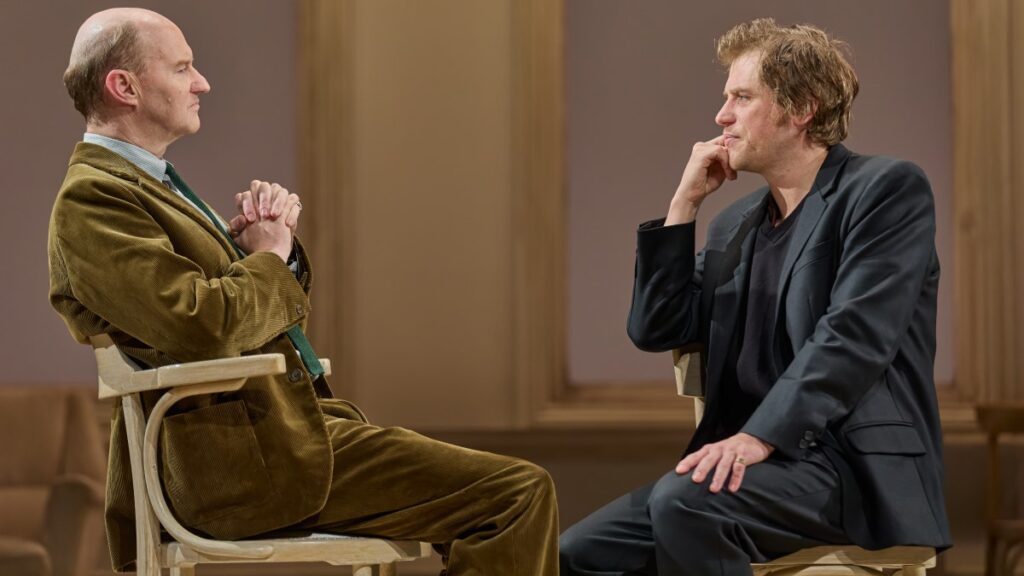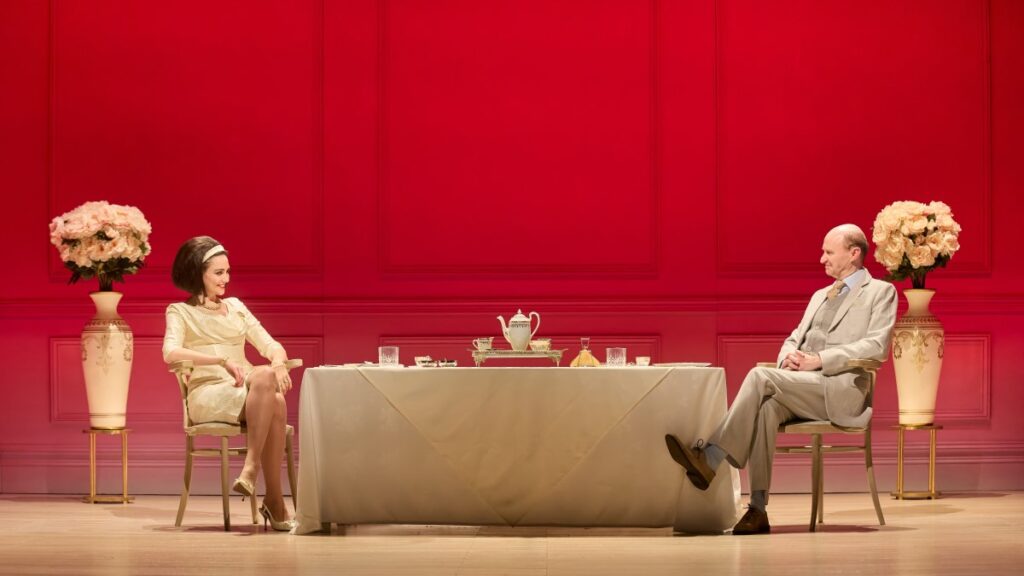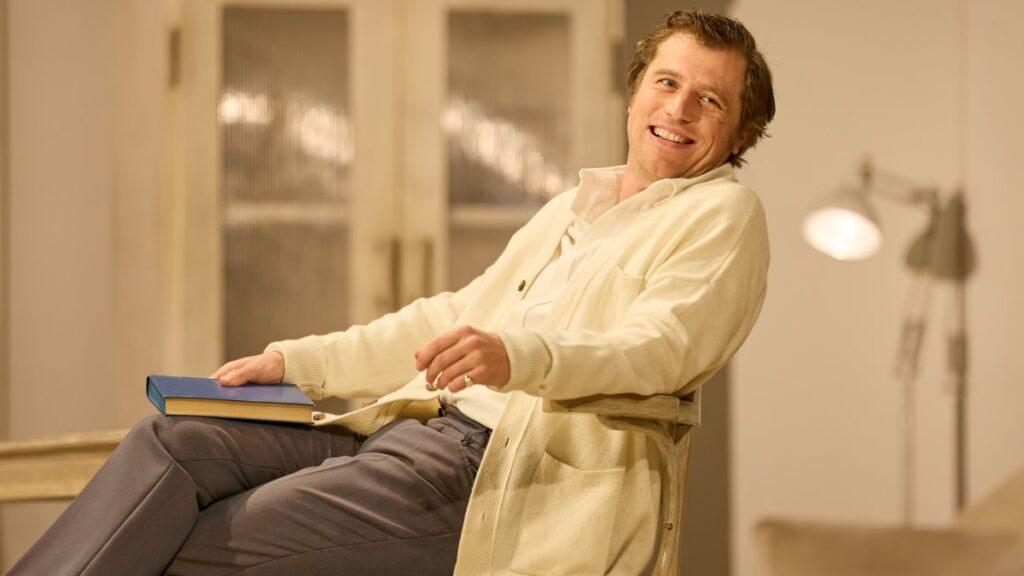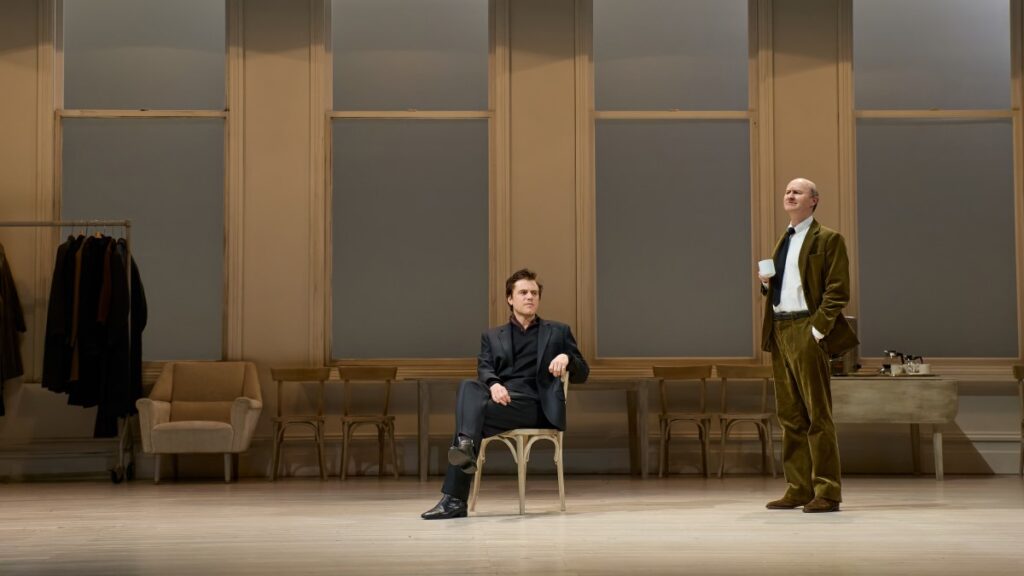
Image via NT Live.
Directed by Oscar winner Sam Mendes (1917), The Motive and The Cue is a play about two titanic talents grappling with Shakespeare. When Sir John Gielgud (Mark Gatiss) and Richard Burton (Johnny Flynn) came together in 1964 to tackle Hamlet, both men were at either ends of their career spectrum. The former was a revered theatrical great who felt his best years were behind him, while his counterpart made headlines, bought Hope diamonds, and revelled in the trappings of Hollywood celebrity.

Image via NT Live.
One had all the advantages of a classical education coursing through his bloodstream, while another came from an abusive working-class background that left him riddled with insecurities. Until that moment, rarely had two more conflicting personalities come together to share a singular purpose. This is what drives The Motive and The Cue and what makes it essential theatre.

Image via NT Live.
Written by Jack Thorne (His Dark Materials), this piece is bigger than those involved. It centres on the creation of art in any form and what makes it so important. The Motive and The Cue might explore process, dissect Shakespeare, and give this ensemble something tantalising to tackle – but it also asks questions. Beneath the bravado of Richard Burton hides a man hamstrung by expectations. Endless litanies from countless critics accusing him of wasting a God given talent in favour of easy money. Lionised by the media because of his romantic attachments, Burton lands on Broadway with Elizabeth Taylor (Tuppence Middleton) in tow and a reputation not without foundation.

Image via NT Live.
His counterpart and contemporary also has some skeletons that separate him from society. Considered a relic by some and revered by others, Sir John Gielgud wrestles with his own relevance daily. This then is the stage audiences are invited to observe as rehearsals for Burton’s Hamlet unfold. Chaotic, considered, and ramshackle in the beginning – it is clear early on that The Motive and The Cue cares deeply about these two people. Beneath the veil of an embodiment, Flynn revives a legend in his prime. Hard-headed with an untethered talent, this iconic actor is a loose cannon. Undisciplined, unchecked, and unwilling to back down – his taste for alcohol is only matched by his love for Elizabeth. In the opening act at least, William Shakespeare comes way down Burton’s list of essentials.

Image via NT Live.
In direct opposition sits Sir John Gielgud, a portrait of restraint, who combats his own insecurities with scathing remarks and unrelenting contempt. In a role that would win Gatiss an Olivier for best supporting actor, these two men struggle to find common ground. With a structure that combines rehearsals with snippets from the play complete, Thorne seamlessly manipulates timelines and dramatizes this legendary collaboration. Packed with pathos, busting at the seams with intellectual transgressions and Shakespearean analysis – The Motive and The Cue is everything theatre should be. With stage direction and set design that eloquently re-enforces the roots of its Hollywood royalty in residence, Sam Mendes has shaped something utterly unique. Not only worthy of a watch, but worthwhile in ways that only become apparent after the fact.
The Motive and The Cue will be available through National Theatre at Home soon.



